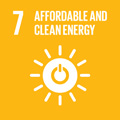- Docente: Margherita Marsili
- Credits: 6
- SSD: FIS/03
- Language: Italian
- Teaching Mode: In-person learning (entirely or partially)
- Campus: Bologna
- Corso: First cycle degree programme (L) in Materials Science (cod. 6830)
-
from Sep 29, 2025 to Jan 13, 2026
Learning outcomes
At the end of the course, the student is familiar with various classes of materials and the properties that characterize them (mechanical, chemical, electrical, optical, and magnetic). They have understood how such properties are determined by the composition, type of bonding, molecular and/or crystalline structure of the material, and how they can be manipulated through mechanical, thermal, and chemical treatments, defects, and impurities. They are knowledgeable about and can classify the main crystal lattices and interpret phase diagrams. They use different software platforms to visualize the atomic structure of materials and monitor changes induced by mechanical stress and temperature.
Course contents
Theory
Introduction: Classification of materials, processes, and material properties.
Interatomic bonds: Overview of different types of bonds, bond energy and equilibrium distance, cohesive energy in solids.
Structure of crystalline solids: Crystalline structures, polymorphism and allotropy; crystal systems, crystallographic directions and planes; crystalline and non-crystalline materials, X-ray diffraction; two-dimensional crystals.
Structure of crystalline solids: Point, line, and planar defects. Surface energy, relaxation and reconstruction. Overview of various microscopic techniques.
Diffusion: Processes and mechanisms of diffusion in solids, activation energy, Fick's first law and diffusion coefficient, Fick's second law.
Mechanical properties: Stress-strain diagrams and their interpretation, elastic and plastic deformation; mechanical properties of ceramics; slip systems, dislocations, and methods to strengthen metals; fracture.
Phase diagrams and nucleation: Isomorphic binary systems; eutectic binary systems; phase transformations and nucleation.
Introduction to the thermal and electrical properties of materials
Computational LaboratoryConstruction and visualization of atomistic models for solids, surfaces, and interfaces.
Equation of state and pressure-induced structural phase transitions.
Surface energy calculation, relaxation and reconstruction effects.
Readings/Bibliography
Scienza e ingegneria dei materiali, William D. jr. Callister, David G. Rethwisch, EDISES
Materials Science and Engineering: An Introduction, 10th Edition, William D. Callister Jr., David G. Rethwisch, Wiley & Sons
Physical Foundations of Materials Science, Günter Gottstein, Springer Berlin, Heidelberg
Principle of surface physics, Friedhelm Bechstedt, Springer Berlin, HeidelbergTeaching methods
Lectures in the classroom using slides and/or a (traditional or electronic) board. Each topic covered will be accompanied by exercises, which will be assigned as homework and later reviewed in class. Computer-based exercises for the computational laboratory.
Assessment methods
Assessment of learning will take place through a written exam and an oral exam, during which the report on the computational laboratory will also be discussed. The written exam will consist of exercises similar to those completed in class.
Students with Specific Learning Disorders (SLD) or temporary or permanent disabilities: it is recommended to contact the University office in charge (https://site.unibo.it/studenti-con-disabilita-e-dsa/it ) in advance. The office will be responsible for proposing any accommodations to the interested students, which must in any case be submitted to the instructor for approval at least 15 days in advance. The instructor will evaluate their suitability in relation to the learning objectives of the course.
Teaching tools
Blackboard (traditional or electronic), video projector, computer.
Office hours
See the website of Margherita Marsili
SDGs


This teaching activity contributes to the achievement of the Sustainable Development Goals of the UN 2030 Agenda.
